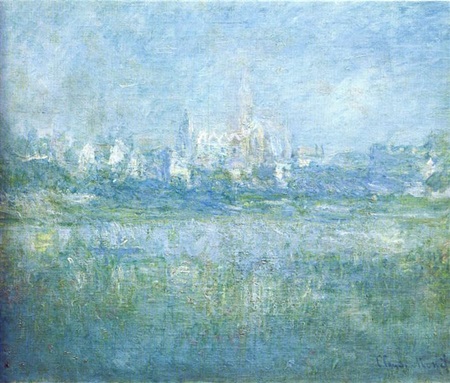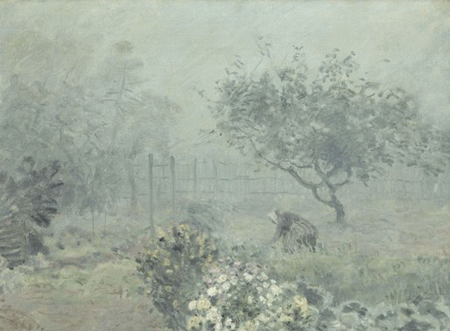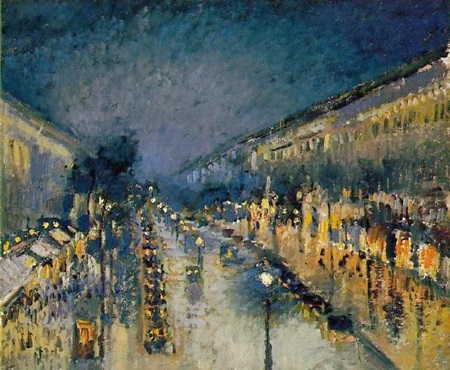 |

|

|
 |
 |

|
Impressionist Art (1870s-1880s)
Beginning in France, Impressionist art was one of the first modern art movements in painting. Impressionism painting shifted
away from traditional European art, a style that was widely rejected at the time. Impressionist artists painted many outdoor landscapes, thus
exchanged their studios for the fresh outdoors. Impressionist art aims to capture an image as if one only had a glimpse of it.
Artists used bold colors, light brushwork, and purposely didn't add detail to achieve that effect. For that reason, art critics
disapproved of the paintings that looked unfinished or incomplete. Some can recognized Impressionist art on the face of many jigsaw puzzles.
Important artists during this movement were Monet, Manet, Pissarro, Degas, and Sisley.
|
Claude Monet (1840-1926)
Claude Monet was a French painter who began the Impressionist movement. In 1874, an art critic nicknamed one of Monet's paintings, "Impression"
because it had light brushwork and focused on light rather than detail. After that incident other artists following that technique were called "Impressionists."
Throughout his life, Monet dealt with depression, poverty, and sickness. At one point, Monet attempted suicide by drowning in a river. Monet also struggled with
self-doubt and often destroyed the paintings he disliked.
Vetheuil in the Fog (1879)
Vetheuil in the Fog, an oil painting by Monet, is an example of Impressionist art. Monet used quick brushstroke to convey a
foggy atmosphere in his painting. He uses differents shades of blue and adds green accents. Vetheuil in the Fog shows the Impressionist style that
is as though you only had a glance of the scene.
|

|
Alfred Sisley (1839-1899)
Though Alfred Sisley was a great artist during the Impressionist Movement, there is little documentation of his life. Sisley's main paitings included
lanscapes and outdoor scenery. Sisley was one of the fiew artists who didn't rely on his art to make a living; Sisley's father regularly gave him allowance.
However, during the Franco-Prussian War his father's business went into a financial crisis and he had to turn to his art for his finances. Because Sisley enjoyed
painting lanscapes he regularly painted outdoors.
Misty Morning (1874)
Misty Morning also called Fog, Voisins is an oil painting by Sisley which currently resides in the Musee d'Orsay. Similar to Vetheuil in the Fog,
Misty Morning has a foggy atmosphere that demonstrates the glimpse-like technique of Impressionist art. The painting includes a woman gathering something, presumably
flowers. Sisley's painting was displayed at the 1874 art exhibition in which the Impressionist paintings first appeared.
|

|
Camille Pissarro (1830-1903)
Camille Pissarro was the only Impressionist artist to feature his artwork in all eight exhibitions of Impressionist art (1874-1886). Pissarro was born
into a Jewish-Portugese family and mainly
resided in France which is shown in the majority of his paintings. Pissarro was acquainted with Degas, Manet, Monet, and Cézanne who was influenced by
Pissarro's work. Pissarro was an anarchist and idealist for a better society. Unlike other Impressionist artists, Pissarro enjoyed painting urban cities
to capture the civilian city life. He practiced capturing movement and light in his paintings.
The Boulevard Montmartre at Night (1897)
During the last period of his life, Pissarro painted a collection of paintings entitled The Boulevard Montmartre painted at different
times of the day which include about fourteen paintings total. In this painting Pissarro uses bold and light colors to show the effect of lights at night.
This oil painting demonstrates Pissarro's interest in painting urban parts of a city.
|

|

|









